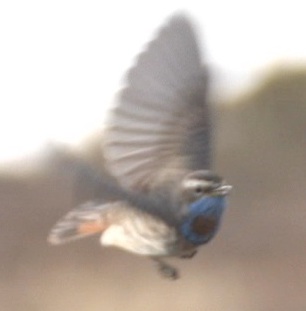Plans for the future
Ivar Segelberg (1914–1987) was an influential
professor in theoretical philosophy in Gothenburg, but also a very
advanced amateur botanist, respected in wide circles for his taxonomic
competence. During the last 20 years of his active life as a botanist, he
specialized on the Italian flora with a main focus on that of the big
islands, Sardinia and Sicily. With great success: he was appointed a
member of the Editorial Board of the Italian national flora,
Flora
d'Italia (1st ed. 1982, by Sandro Pignatti).
Here is a photo of Ivar Segelberg collecting plants in Sardinia in 1964:
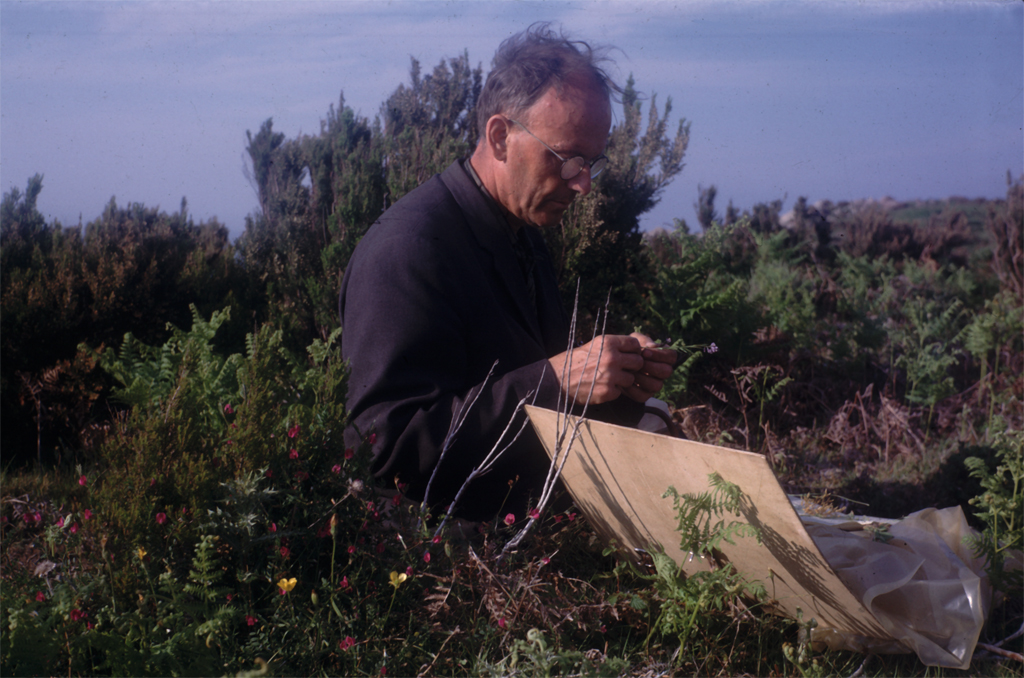
In 2008 a memorial symposium for Ivar Segelberg, entitled
Philosophy
and Botany and supported by the
Swedish
Research Council,
was held at the University of Gothenburg. Among the speakers were
Sandro Pignatti, professor emeritus of ecology, Università di Roma “La
Sapienza” and his wife Erika Pignatti Wikus, professor emerita in
phytogeography at the University of Trieste. Herbert Hochberg, in the
1960's a postdoc for Segelberg in Gothenburg, now professor emeritus in
philosophy at the University of Austin, Texas, also gave a lecture. So did
a number of Swedish pupils and students of Segelberg. For more details
around the symposium see
http://phil.gu.se/segelberg,
and for more on Hochberg see
below.
Beginning in 2009, science journalist Torgny Nordin, my wife Lena and I
have documented the activities of Ivar Segelberg in Sardinia and Sicily
during the 1950's, 60's and 70's, using still photography, video film and
digital-tape interviews. Our aim has been to publish two books, several
scientific and popular papers, and at least one documentary movie. The
first book, also named
Philosophy
and
Botany, was
published in 2014. It focuses on Segelberg's life and work.
From 2013 and on, our work has gradually shifted its focus towards
environmental problems in Sardinia and Sicily, what is being done to solve
them, and the ethical problems connected with this process. Hence the main
documentary and the forthcoming texts (including a planned second book)
will be about Sicily, its flora and fauna, and different aspects of the
work with environmental and conservation issues on this island. A lot of
material has already been collected in this second phase of the project,
including several interviews with key persons.
Sicily and Sardinia host a enormous biodiversity. So does the
Mediterranian area as a whole. In a future, third phase of the project we
want to extend our work to other parts of this
"Mediterranian
Basin
Biodiversity Hotspot".
Financial support for our project, including the trips to Italy and
Switzerland and the printing of the book, has come from
Stiftelsen
Torsten Petterssons Fond för Humanisk Vetenskap, Kungliga Vetenskaps-
och Vitterhetssamhället i
Göteborg,
Stiftelsen Lars
Hiertas Minne, Kungliga
Vitterhetsakademien, Stiftelsen Erik och Gurli Hultengrens Fond för
Filosofi and
Anders Karitz' Stiftelse.
The first documentary trip went to Sardinia
in
May 2009. It was the result of
an initiative from professors Erika and Sandro Pignatti, who had just
lectured at the Segelberg symposium in Gothenburg. We made a one-week
roundtour "in the footsteps of Ivar Segelberg", which meant visiting a
number of important botanical locations where Segelberg once collected
plants. Our local guide was Armando "Dino" Orrú, who also accompanied
Segelberg on his travels in the 1970's.
Here is a short glimpse from the mouth of the River Le Cossi on the north
coast, with Erika Pignatti and Dino Orrú. This small area hosts several
plants that are endemic to Sardinia. Regrettably – from an ecological
point of view – the surrounding parts of the north coast have since
Segelberg's time been heavily exploited for leisure purposes.
In
April-May 2010, Nordin and I
made a shorter trip to Sardinia to get photo, video and audio material
from certain places that we did not visit in 2009, including the central
highlands and the landscape around the town of Oliena.
The Sardinian soundscape is as fascinating as the landscape. Here an early
morning near Oliena, Sardinia, May 2, 2010. European bee-eaters, European
turtle doves and a lot of other voices are heard. HV-20, handheld, with
Canon DM-50 mic, just to give you the feeling:
During this trip we could interview Dino Orrú at length about his journeys
with Segelberg. The interview was done at a most beautiful place, Capo
Mannu, with a handheld camera. Here is a very short excerpt about
languages. The bird that interrupts our talk is a worried peregrine
falcon.
On the way home I visited Erika and Sandro Pignatti in Rome, where I did a
couple of interviews with them about Segelberg and the relevance of his
work today.
Later in
2010,
we also made a tour to Stockholm and Uppsala for interviews with two
emeritus professors in botany, who both knew Segelberg well when they were
young: Bertil Nordenstam and Bengt Jonsell.
In 2010, Herbert Hochberg was awarded a
honorary
doctorate at the Faculty of Arts, University of Gothenburg.
Early in
2011,
Nordin and I went to Geneva to see Adelaide Stork, botany professor there
but born and educated in Sweden. She was a close friend of Ivar Segelberg
from her youth and until his death, and she contributed much to the
biography in our 2014 book.
The next trip to Italy in the series was made by
me and my wife Lena in
April-May 2012.
We visited Erika and Sandro Pignatti in Rome and did several interviews
with them. Here is the Pignatti couple in the Orto Botanico (Botanical
Garden) of Rome.
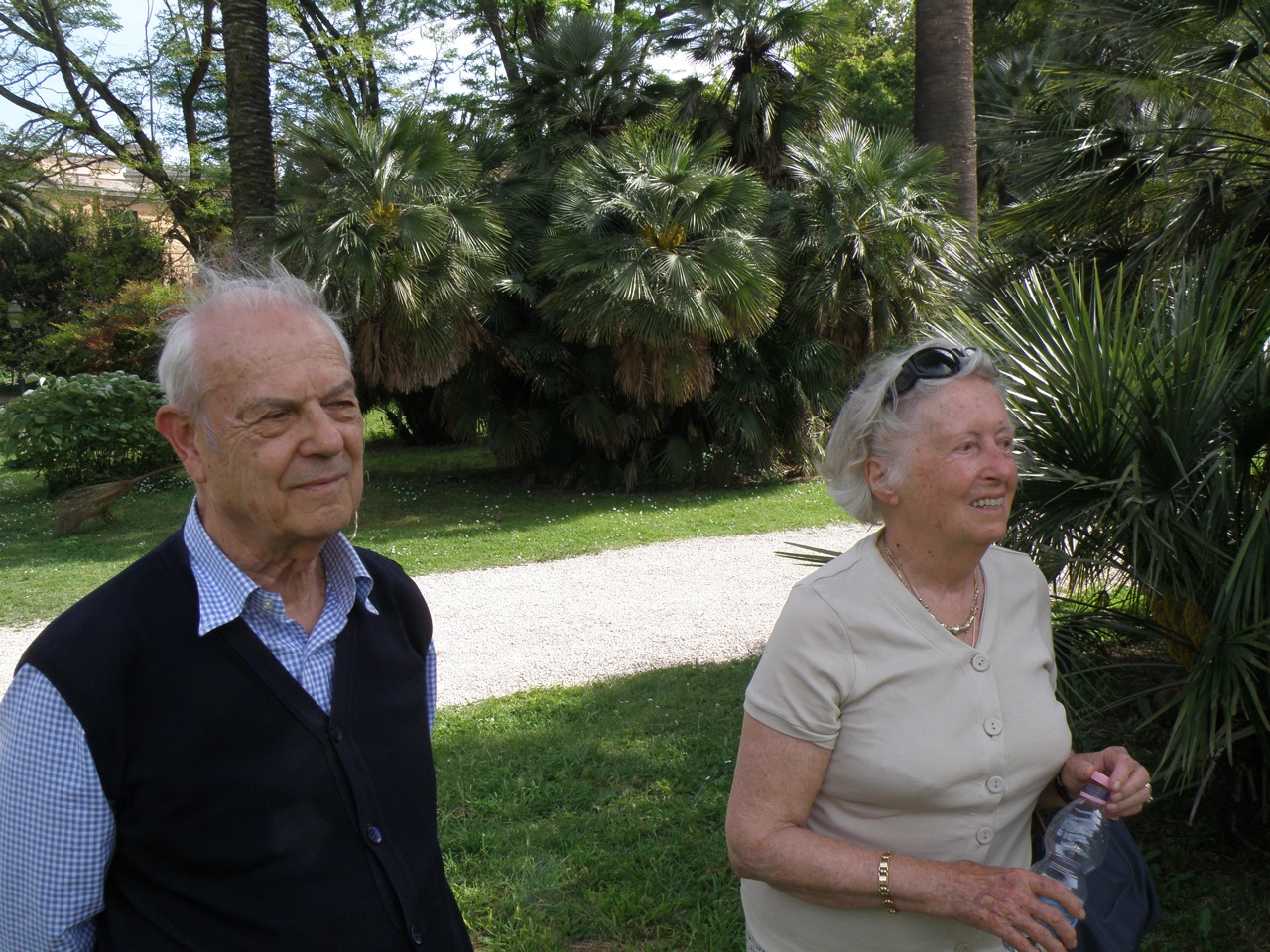
After these interviews we had all the necessary material for the first
book, which was published in 2014.
In
May 2013
I made another short trip for the project. The goal this time was Palermo,
which has one of the oldest botanical gardens in the world. There I first
had a long interview with Sandro Pignatti about the very rich and diverse
flora of Sicily and the conditions that has shaped it. Then I was taken on
a rather breathtaking tour to Rocca Busambra, which is a botanically rich
mountain in northwestern Sicily that Segelberg visited repeatedly. The
tour was lead by professor Francesco Raimondo. Raimondo is a prominent
specialist on the flora of Sicily, until his retirement the head of the
Botanical Garden in Palermo, and is still much engaged in conservation
issues (see
below).
Here is the full interview with Sandro Pignatti (camera for this and all
the following clips up til November 2015: Canon XL-H1A):
In the below video from the excursion to Rocca Busambra, Sandro Pignatti
first describes the place and its importance for Ivar Segelberg. Then,
Francesco Raimondo speaks about the endemic plants of the area.
At the end of the same tour, Francesco Raimondo describes the rural area
south of Rocca Busambra and its historical importance. Thanks to Massimo
Chindamo for help with the translation.
Another extremely important area from an
ecological and botanical point of view is the
Madonie
National Park in northern Sicily, which Lena and I visited briefly
in
May 2014 as a reconnaissance
tour for the May 2015 excursion (see below). The Madonie mountains reach
heights of almost 2000 meters and have a very varying geology, which makes
for great biodiversity. The below picture is from Piano Zucchi, near
the central massive with its highest peak Pizzo Carbonara.
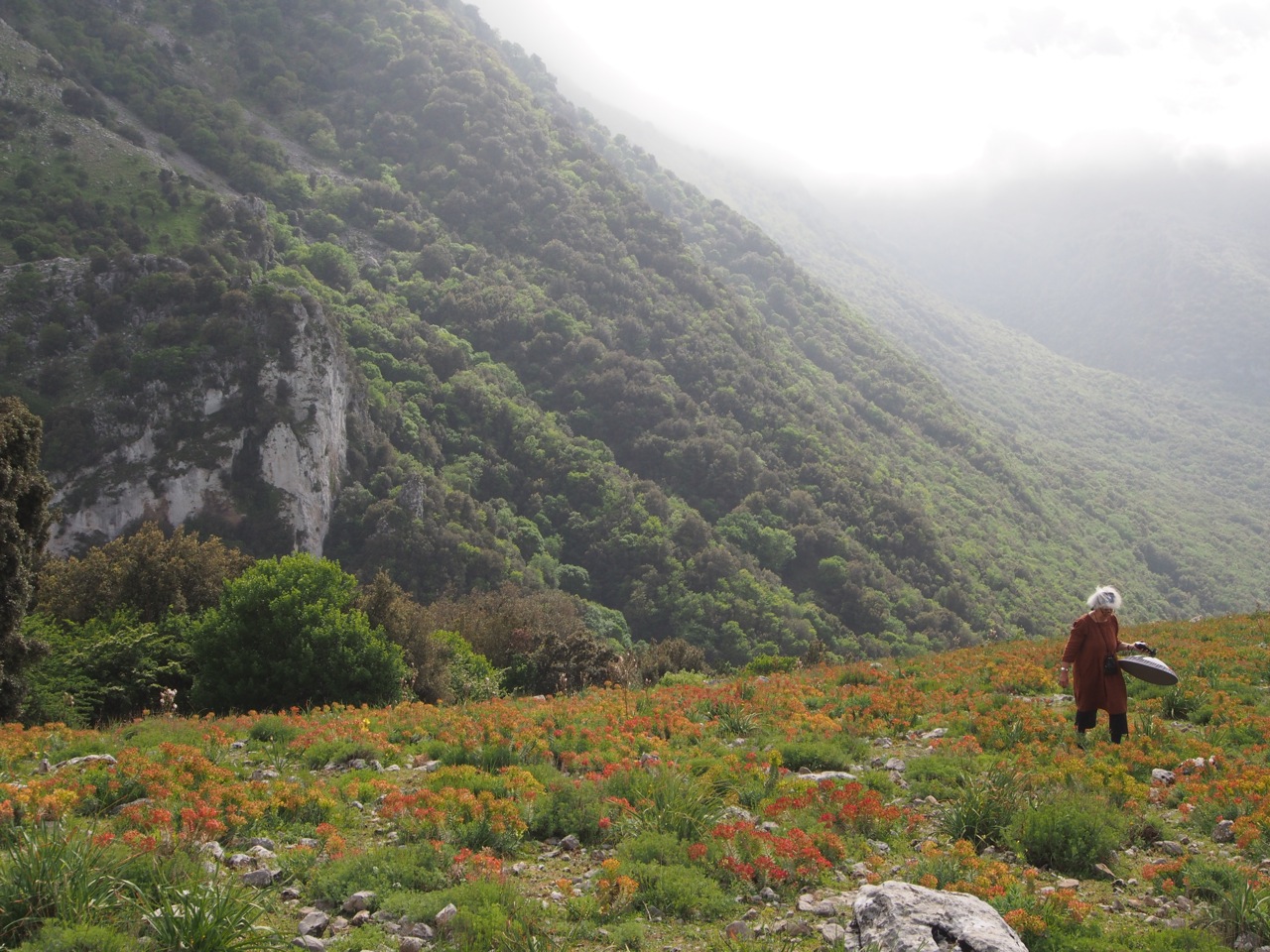
The most extensive excursion that Torgny Nordin and
I have made so far took place in
May
2015. We visited a number of national parks and other important
areas in the eastern half of Siciliy, starting with one and a half day in
the Etna park with its exotic biotopes (picture © 2015 Torgny Nordin).
Note the birches (
Betula alba)
that grow in the volcanic ash – Etna is the southernmost locality for
birch in Europe.
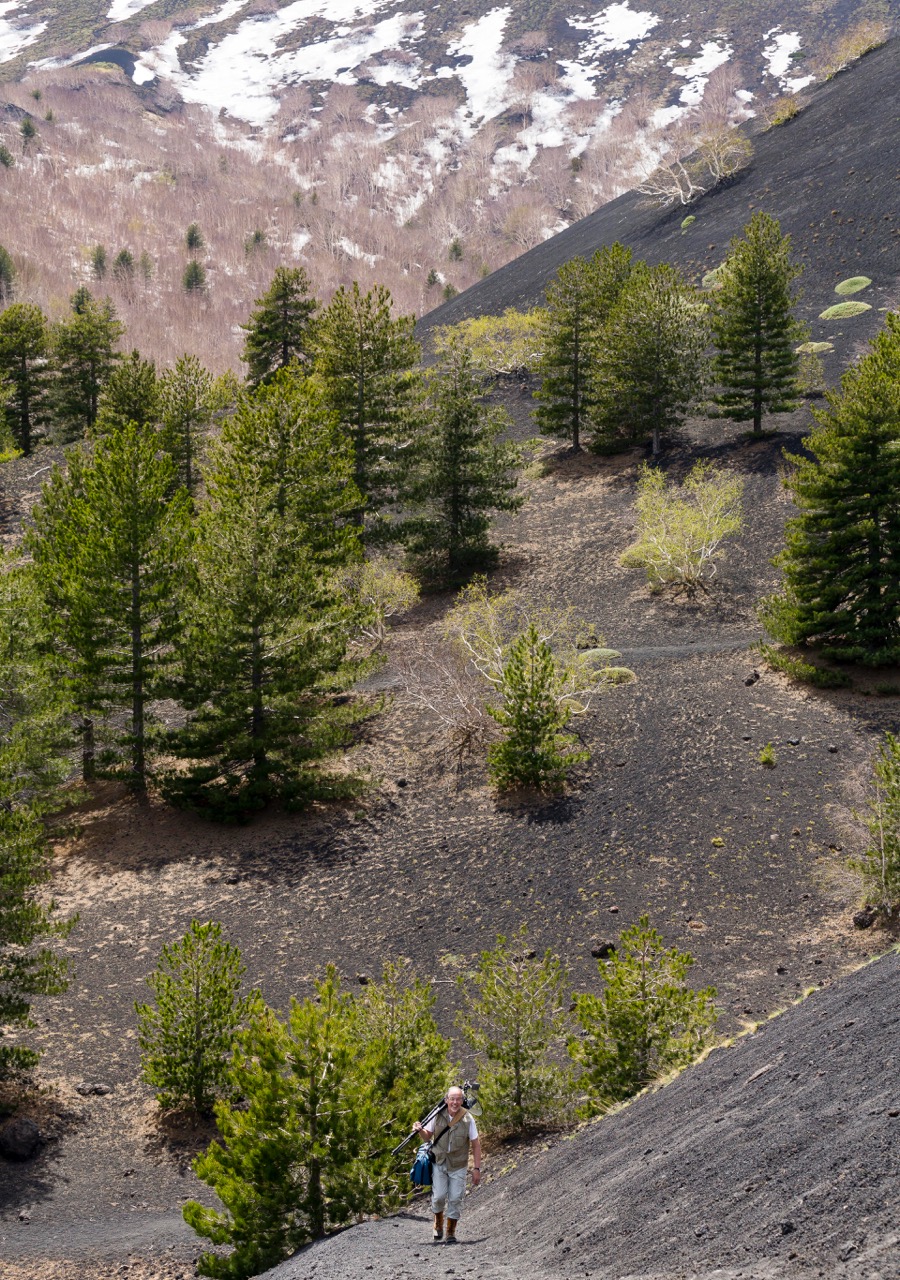
Then, a short visit to the Nebrodie park, where we among other things
searched for an endemic plant that Segelberg collected there in 1964,
regrettably without finding it (although we found the place).
After that we had a great day watching migrant birds of prey at the
Messina Strait.
On
the top of Monte Dinamaro we had an interview with Sicilian ornithologist
and raptor specialist Andrea Corso, who among other things told us about
the illegal hunting of birds that still is going on in Sicily. The video
has been edited using clips from other parts of our excursion, so you also
get a glimpse of bird hunting according to the 4th century mosaics at the
Villa
Romana del Casale in southern Sicily.
The marvellous Madonie park was our next goal and we spent two days there.
Here is a short clip from the zone where cork is still harvested and the
bells of the goats can still be heard, here along with the bell from a
nearby church and a choir of birds:
At our two visits to Piano Zucchi, the song of wood larks (
Lullula
arborea, trädlärka) dominated the soundscape.
Here
are 7 minutes of them (and some other voices).
The wood larks are also heard in the following movie clip. In the visual
background: Pizzo Carbonara.
In the Madonies, we also followed a steep path (carrying rather heavy
video equipment!) up the side of Monte Scalone to see the famous, endemic
fir species,
Abies
nebrodensis. It once covered large areas of northern Sicily, but
suffered heavily from the deforestation of the island in previous
centuries. In 1900 the tree was considered extinct, but it was
rediscovered in 1957. After that, it has been successfully propagated in
botanical nurseries and now grows in several places, including the Botanic
Gardens of Rome and Gothenburg. However, there are still only around 30
grown-up individuals overall, mainly because every young plant at the
original Madonie location has to be carefully protected against the wild
hogs that have invaded the area.
Monte Scalone is close to the valley of Madonna degli Angeli, in the
eastern part of the magnificient Quacella mountain ridge. In the following
short sequence (
to be further edited)
we first see part of the Quacella formation. Then a view from halfway up;
note the white-flowering tree: a manna ash,
Fraxinus
ornus, abundant throughout the Madonie and used for the
production of
manna.
A rock bunting (
Emberiza cia,
klippsparv) briefly appears. A view from higher up shows the entrance of
the valley, with more manna ashes down below. Then we are in the upper
part of the valley and at the rare Nebrodie firs. As if pre-arranged, the
bird whose Swedish name "gransångare" literally means Fir Warbler in
English (
Phylloscopus collybita,
or chiffchaff in actual English) was singing during our visit to the
valley.
At Quacella we were also happy to observe the endemic bird that Andrea
Corso mentions at the end of his interview, the Sicilian rock partridge (
Alectoris
graeca whitakeri).
The tour continued to central Sicily and then to the south and south-east
coast, ending with two days in Siracusa and its surroundings. Of course we
have a lot of material from these locations too, but now we have to go on
to the next trip!
Next trip for the project was made in
November
2015. For three days, Nordin and I visited Rome and Palermo in
order to interview professors Sandro Pignatti and Francesco Raimondo
again. This time the focus of the interviews was the environmental
problems in Sicily, and what can be done to handle the great challenges
that they imply. Clips from the interview with Pignatti, focusing on
environmental ethics, will be included in the planned documentary.
Francesco Raimondo has now retired from his academic position but is still
doing research on a contract with the university. Below is a condensed
version of an interview with him on November 4, 2015. Above all, Raimondo
emphasizes the negative effects of abandoning traditional agricultural
methods. This, together with a partly misguided conservation policy, has
resulted in the dominance of invasive plant and animal species in large
areas. Abandoning traditional agriculture has also led to underpopulation
of the central parts of Siciliy, while the coastal areas are overpopulated
leading to a high level of strain on the environment. At the end of the
lecture, Raimondo talks about the recent wave of immigration to Sicily. It
causes problems, but can also be turned into something that is positive
for the environment: "You only need to be able to manage these processes
and make positive what might seem to be only a social action, a
humanitarian support action. That is to say, let us involve these masses
that are searching, are getting away from their roots because of economic
issues but also because they want to save their own lives, and let us
integrate them in our environment and make them work in favour of the
environment."
The interview was done in the Raimondo home in evening time and without
any extra lighting equipment, which explains the imperfect image quality.
Camera from now on: Panasonic GH4. Thanks to Massimo Chindamo for help
with the translation, and to PhD Stefania Raimondo who checked the final
translation.
We also had an interview in the Palermo Botanical Garden with professor
Gianniantonio Domina. He told us about the history of the garden and its
importance for the early development of agri- and horticulture in Europe,
as well as for the science of botany and today's struggle to conserve
endangered species. Here is a part of the interview.
